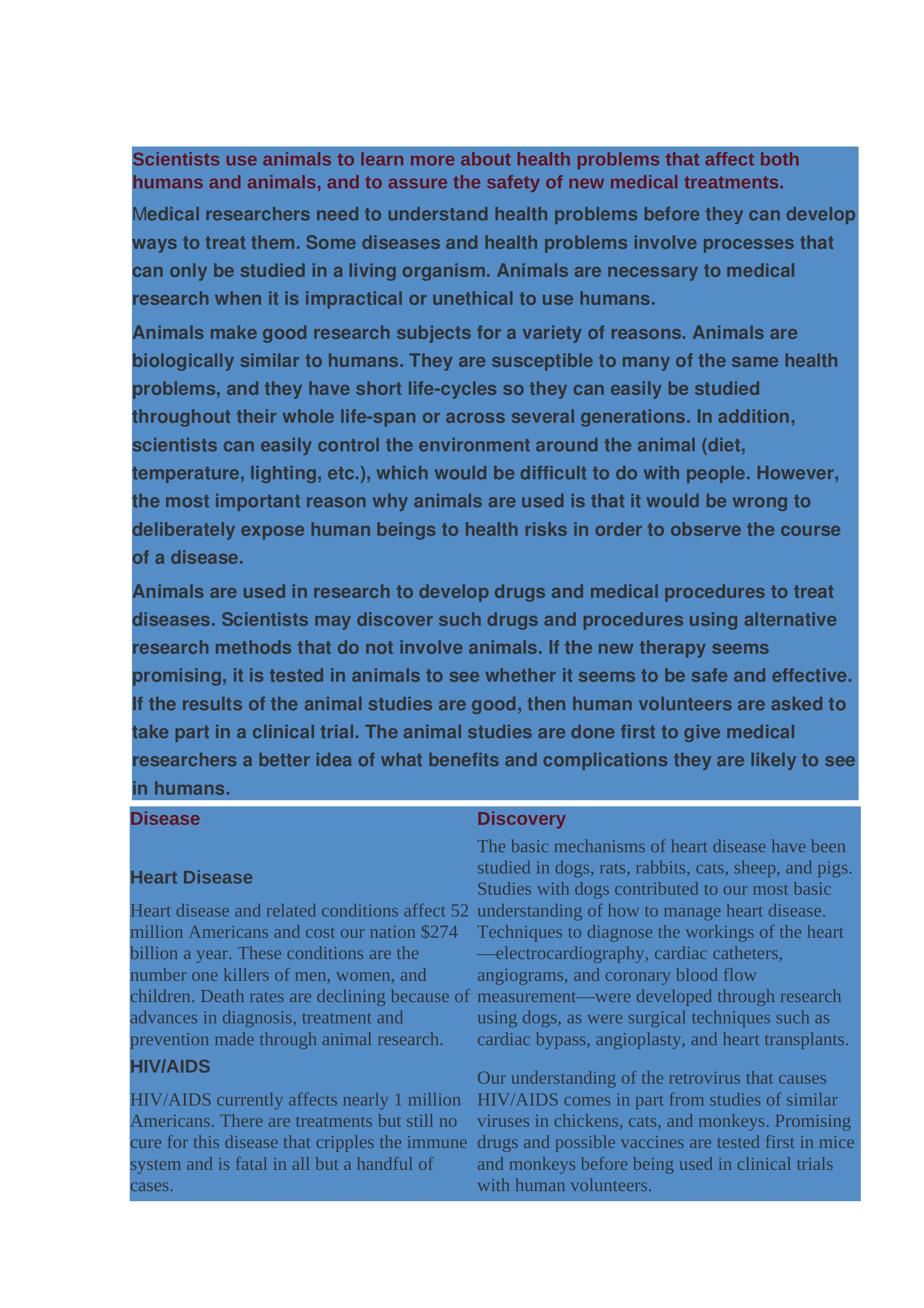LANGUE
Publié le 08/05/2014
Extrait du document


«
Scientists use animals to learn more about health problems that affect both
humans and animals, and to assure the safety of new medical treatments.
M edical researchers need to understand health problems before they can develop
ways to treat them. Some diseases and health problems involve processes that
can only be studied in a living organism. Animals are necessary to medical
research when it is impractical or unethical to use humans.
Animals make good research subjects for a variety of reasons. Animals are
biologically similar to humans. They are susceptible to many of the same health
problems, and they have short lifecycles so they can easily be studied
throughout their whole lifespan or across several generations. In addition,
scientists can easily control the environment around the animal (diet,
temperature, lighting, etc.), which would be difficult to do with people. However,
the most important reason why animals are used is that it would be wrong to
deliberately expose human beings to health risks in order to observe the course
of a disease.
Animals are used in research to develop drugs and medical procedures to treat
diseases. Scientists may discover such drugs and procedures using alternative
research methods that do not involve animals. If the new therapy seems
promising, it is tested in animals to see whether it seems to be safe and effective.
If the results of the animal studies are good, then human volunteers are asked to
take part in a clinical trial. The animal studies are done first to give medical
researchers a better idea of what benefits and complications they are likely to see
in humans.
Disease Discovery
Heart Disease
Heart disease and related conditions affect 52
million Americans and cost our nation $274
billion a year.
These conditions are the
number one killers of men, women, and
children.
Death rates are declining because of
advances in diagnosis, treatment and
prevention made through animal research.
The basic mechanisms of heart disease have been
studied in dogs, rats, rabbits, cats, sheep, and pigs.
Studies with dogs contributed to our most basic
understanding of how to manage heart disease.
Techniques to diagnose the workings of the heart
—electrocardiography, cardiac catheters,
angiograms, and coronary blood flow
measurement—were developed through research
using dogs, as were surgical techniques such as
cardiac bypass, angioplasty, and heart transplants.
HIV/AIDS
HIV/AIDS currently affects nearly 1 million
Americans.
There are treatments but still no
cure for this disease that cripples the immune
system and is fatal in all but a handful of
cases.
Our understanding of the retrovirus that causes
HIV/AIDS comes in part from studies of similar
viruses in chickens, cats, and monkeys.
Promising
drugs and possible vaccines are tested first in mice
and monkeys before being used in clinical trials
with human volunteers..
»
↓↓↓ APERÇU DU DOCUMENT ↓↓↓
Liens utiles
- LA SCIENCE DE LA LANGUE ET LE STRUCTURALISME
- « Yvain ou le Chevalier au lion » Langue d’origine
- Faut-il utiliser le « iel » dans la langue française ?
- Prénom : Date : Cycle 3 Secourir : les gestes simples Complète le texte avec les mots suivants : la bouche - la langue - genou - la hanche - le poignet - en arrière - les poumons.
- A la une / Culture Reflet culturel Parler la même langue ne signifie pas dire la même chose Ce n’est parce que nous parlons la même langue que nous disons tous forcément la même chose.








